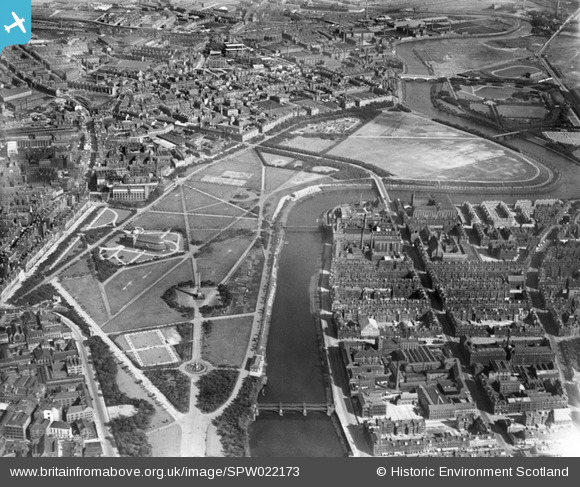SPW022173 SCOTLAND (1928). Glasgow Green and River Clyde, Glasgow. An oblique aerial photograph taken facing south-east.
© Hawlfraint cyfranwyr OpenStreetMap a thrwyddedwyd gan yr OpenStreetMap Foundation. 2026. Trwyddedir y gartograffeg fel CC BY-SA.
Manylion
| Pennawd | [SPW022173] Glasgow Green and River Clyde, Glasgow. An oblique aerial photograph taken facing south-east. |
| Cyfeirnod | SPW022173 |
| Dyddiad | 1928 |
| Dolen | NRHE Collection item 1256535 |
| Enw lle | |
| Plwyf | GLASGOW (CITY OF GLASGOW) |
| Ardal | CITY OF GLASGOW |
| Gwlad | SCOTLAND |
| Dwyreiniad / Gogleddiad | 259959, 664002 |
| Hydred / Lledred | -4.2371120154844, 55.848886216484 |
| Cyfeirnod Grid Cenedlaethol | NS600640 |
Pinnau

Billy Turner |
Wednesday 7th of October 2015 07:45:50 PM | |

Billy Turner |
Wednesday 7th of October 2015 07:13:28 PM | |

Billy Turner |
Wednesday 7th of October 2015 02:39:36 PM | |

Billy Turner |
Wednesday 7th of October 2015 02:07:26 PM | |

Billy Turner |
Wednesday 7th of October 2015 01:57:09 PM | |

RABHAW |
Friday 28th of March 2014 10:31:16 PM | |

fredmaisie |
Tuesday 25th of March 2014 03:51:36 PM | |

Class31 |
Monday 3rd of December 2012 03:26:31 PM | |

Class31 |
Monday 3rd of December 2012 03:25:09 PM | |

Class31 |
Monday 3rd of December 2012 03:23:57 PM | |
also known as dalmarnock bridge with the power station at left hand side |

fredmaisie |
Tuesday 25th of March 2014 03:43:59 PM |

Class31 |
Monday 3rd of December 2012 03:22:57 PM | |

Class31 |
Monday 3rd of December 2012 03:22:00 PM | |

Class31 |
Monday 3rd of December 2012 08:52:30 AM | |

ewnmcg |
Wednesday 1st of August 2012 04:16:55 PM | |

Kate |
Friday 29th of June 2012 10:13:03 AM | |

Kate |
Friday 29th of June 2012 10:09:29 AM | |

Kate |
Friday 29th of June 2012 12:56:53 AM | |

bullywee |
Thursday 28th of June 2012 03:51:45 PM |


![[SPW022173] Glasgow Green and River Clyde, Glasgow. An oblique aerial photograph taken facing south-east.](http://britainfromabove.org.uk/sites/all/libraries/aerofilms-images/public/100x100/SPW/022/SPW022173.jpg)
![[SPW022175] Glasgow, general view, showing Glasgow Green and River Clyde. An oblique aerial photograph taken facing south.](http://britainfromabove.org.uk/sites/all/libraries/aerofilms-images/public/100x100/SPW/022/SPW022175.jpg)
![[SPW022063] Glasgow, general view, showing Glasgow Green and River Clyde. An oblique aerial photograph taken facing north.](http://britainfromabove.org.uk/sites/all/libraries/aerofilms-images/public/100x100/SPW/022/SPW022063.jpg)
![[SPW022064] Glasgow, general view, showing Glasgow Green and River Clyde. An oblique aerial photograph taken facing north.](http://britainfromabove.org.uk/sites/all/libraries/aerofilms-images/public/100x100/SPW/022/SPW022064.jpg)





